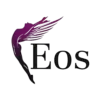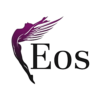Table of Contents
ToggleEmployee onboarding is a critical process that sets the stage for a new hire’s experience within a company. Effective onboarding not only helps new employees acclimate to their roles but also enhances retention and productivity. Here, we’ll explore employee onboarding best practices to ensure your new hires feel welcomed, supported, and prepared to contribute to your organisation’s success.
1. Start the Onboarding Process Early
One of the best practices for employee onboarding is to start the process before the new hire’s first day. This can include:
- Sending a welcome email with essential information about the company, team, and first-day logistics.
- Providing access to an online portal with resources such as the employee handbook, organisational charts, and training materials.
- Assigning a mentor or buddy to answer any pre-boarding questions and offer support.
Read more: Crafting an Effective Employee Onboarding Plan: A Guide for Business Owners and HR Professionals
2. Create a Structured Onboarding Plan
A well-structured onboarding plan outlines the key activities and milestones for the first few weeks or months. This plan should include:
- Orientation sessions to introduce company culture, values, and policies.
- Job-specific training to help new hires understand their roles and responsibilities.
- Regular check-ins with managers to discuss progress and address any concerns.
3. Personalize the Experience
Tailoring the onboarding experience to individual needs can significantly enhance engagement and satisfaction. Consider the following:
- Customising training modules based on the new hire’s role and previous experience.
- Offering flexible onboarding schedules to accommodate different learning paces.
- Providing opportunities for new hires to connect with colleagues and build relationships.
Read more: Navigating Global Talent: Best Practices for Onboarding International Employees
4. Foster a Welcoming Environment
Creating a welcoming and inclusive environment is essential for making new employees feel valued from day one. Best practices include:
- Preparing the workspace in advance with all necessary equipment and supplies.
- Hosting a welcome lunch or coffee break with team members to encourage social interaction.
- Ensuring that all team members are aware of the new hire’s arrival and are prepared to offer support.
5. Leverage Technology
Using technology can streamline the onboarding process and enhance the overall experience. Some effective ways to leverage technology include:
- Implementing an onboarding software platform to automate paperwork and track progress.
- Utilising virtual reality or interactive videos for engaging training sessions.
- Encouraging new hires to use collaboration tools like Slack or Microsoft Teams for communication.
6. Provide Continuous Feedback and Support
Ongoing feedback and support are crucial for new hires to feel confident and competent in their roles. Best practices involve:
- Setting up regular one-on-one meetings with managers to discuss performance and development.
- Offering opportunities for professional growth through training programs and workshops.
- Encouraging open communication and providing a safe space for new hires to ask questions and express concerns.
7. Evaluate and Improve the Onboarding Process
Continuous improvement is key to maintaining an effective onboarding program. Regularly evaluate the process by:
- Gathering feedback from new hires through surveys or interviews.
- Analysing retention and performance data to identify trends and areas for improvement.
- Making necessary adjustments to the onboarding plan based on feedback and data insights.
Read more: How and Why to Make An Effective New Employee Onboarding Plan
Conclusion
Implementing these employee onboarding best practices can significantly impact the success and satisfaction of your new hires. By starting the onboarding process early, creating a structured plan, personalising the experience, fostering a welcoming environment, leveraging technology, providing continuous feedback and support, and continuously evaluating the process, you can set your new employees up for long-term success and positively influence your organisation’s growth and culture.
By focusing on these employee onboarding best practices, your organisation can ensure that new hires feel supported, engaged, and ready to contribute from day one.
Partnering with an EOR service like Eos is a smart, strategic move. Contact us today and check our services here.
Photo by Icons8 Team on Unsplash






